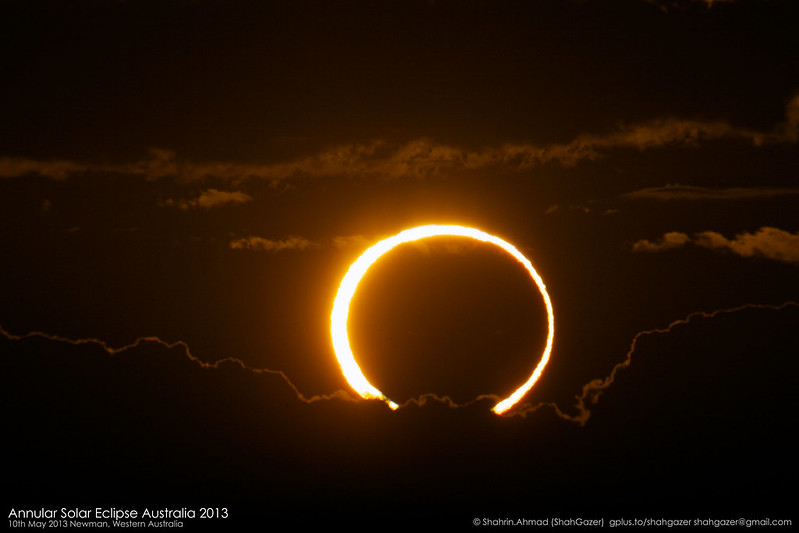Ready for the first solar eclipse of the year? This weekend sees one of the top draw astronomical events for 2020, with a ‘ring of fire’ annular solar eclipse spanning eastern Africa and southern Asia on Sunday, June 21st.
This is the 4th shortest annular eclipse for the 21st century, with a maximum annular span of just 38 seconds. 2002 hosted a shorter annular eclipse, and the remote annular eclipse of May 9, 2032 over the south Atlantic is also shorter at 22 seconds. The shortest annular eclipse for the century (clocking in at just 19 seconds) occurs on December 16, 2085.
Path and Prospects on Eclipse Day
While few large cities are along the path of annularity, hundreds of millions of people are just a short day’s travel from the path. Partial phases stretch across nearly all of Africa and Asia, and just nick southeastern Europe at sunrise and northern Australia at sunset. Partial phases for the eclipse run from 3:46 to 9:34 Universal Time (UT).

The antumbra (the core shadow of an annular eclipse) touches down over the Republic of the Congo at 4:47 (UT) at local sunrise, and races 1.7 kilometers per second to the northeast over the Horn of Africa. Then, the antumbra crosses north of the Bab al-Mandab Strait, just missing Sanaa, the capital of Yemen before crossing the Empty Quarter of the Arabian peninsula and Oman. The path then threads its way through cities in Pakistan and northern India before crossing the Himalayas. Mid-eclipse occurs just north of New Delhi at 6:40 UT.
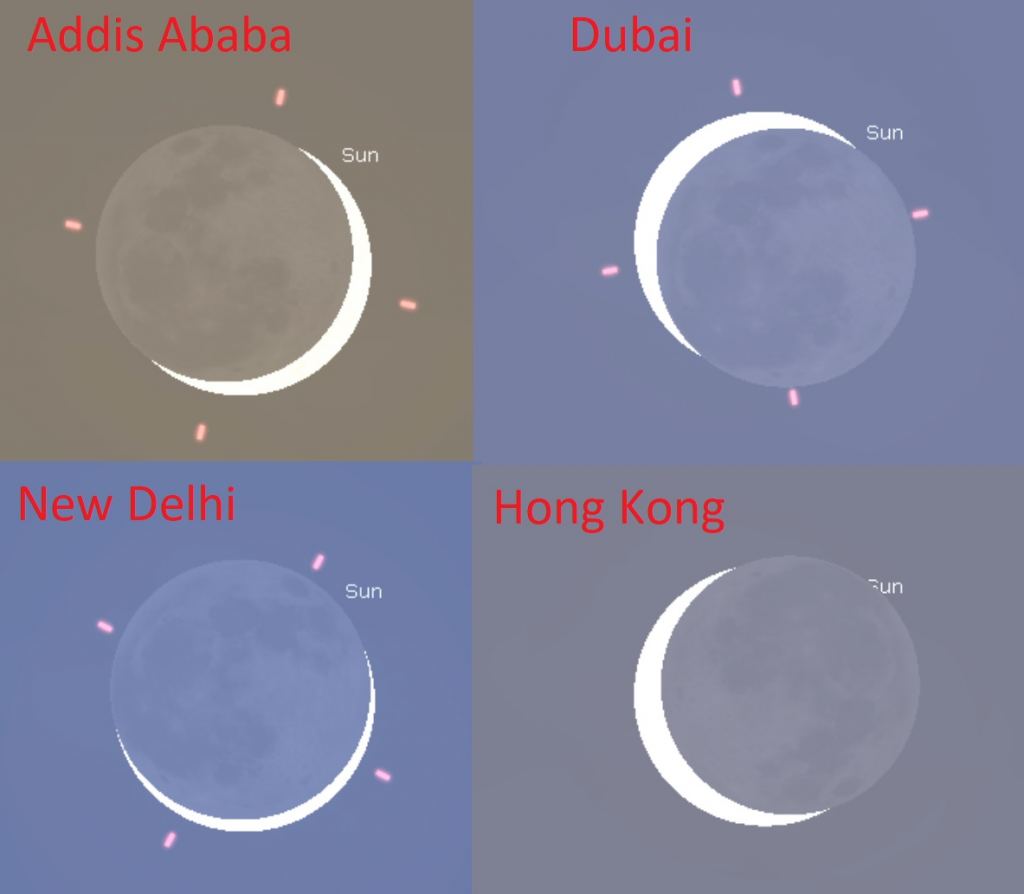
Tantalizingly, the annular eclipse passes just 375 kilometers north of the tallest peak on Earth, Mount Everest. Has anyone ever seen an eclipse from the summit of Everest? Edmund Hillary and Tenzing Norgay were the first climbers to reach the summit of Everest on May 29, 1953; since that time, an annular eclipse has graced the peak only once, on November 27, 1965. The next time this will occur is on February 17, 2064… typical climbing season for Everest is right around April-May.
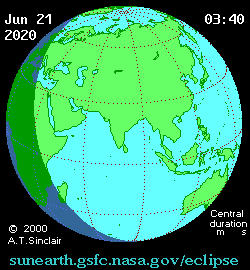
The eclipse then makes the long trek over southern China, making landfall one last time over Taiwan before departing the Earth at sunset 450 kilometers south of the U.S. territory of Guam at 8:32 UT.
An annular solar eclipse occurs when the Moon is near apogee at New phase at one of its nodes intersecting the ecliptic plane, making it too small to cover the Sun visually as seen from the Earth. Instead, a bright ‘annulus’ or ‘ring of fire’ surrounds the Moon at mid-eclipse. It’s often cited how fortunate we are to have a Moon 400 times smaller than our host star but also 400 times closer, allowing total solar eclipses to occur… but in our current epoch, annular eclipses are actually more common than totals, and will become even more so in the millennia to come. This is because the Moon is slowly moving away from us at a current rate of 3.8 centimeters a year. About 900 million years ago, the very first brief annular eclipse occurred… and about 1.4 billion years from now, the final total solar eclipse will grace the skies of the Earth, after which, all central solar eclipses will be annular.
You can see how the celestial scene lines up for this weekend’s ring of fire annular, as the Moon crosses its ascending node less than three hours prior to New phase on Sunday, passed apogee 404,596 km from the Earth on June 15th, and the Earth reaches aphelion on July 4th.
The Eclipse vs. the June Solstice
Most notably, this annular eclipse occurs just nine hours after the northward June solstice, marking the start of northern hemisphere summer and southern hemisphere winter. The last time a solar eclipse occurred within 24 hours of a solstice was June 21st, 2001 and the next one won’t occur until June 21st 2039.
This eclipse also marks the middle of the second of three eclipse seasons for 2020. This ongoing season is bracketed by two penumbral lunar eclipses: one which occurred on June 5th, and the other on July 5th. It’s rare for a season to contain three eclipses, though as 2020 shows us, it’s not impossible.
This is also member 36 of the 70 eclipses in solar saros series 137, which started in May 25th, 1389 and runs all the way out until June 28, 2633.
Unlike the onset of darkness during a total solar eclipse, the sky remains daylight even at the height of an annular solar eclipse: even 1% of the ‘ring of fire’ Sun is still surprisingly bright. At most, you’ll maybe notice the blue sky taking on a subtle metallic tint. This weekend’s annular eclipse will obscure 99.4% of the Sun at its maximum. Daytime stars won’t make an appearance, though you just might notice -4.3 magnitude Venus fresh off of inferior conjunction on June 3rd, just 25 degrees west of the Sun on the 21st. If you’re fortunate enough to witness Sunday’s annular eclipse in person, look around an ask yourself: would you notice that there was anything amiss, if you had no beforehand knowledge of the event? Perhaps, you would notice the horns of the crescent Sun though thick clouds low to the horizon, a scene perhaps witnessed as ‘Joshua’s eclipse’ on October 30, 1206 BC. Or maybe you would notice the score of crescent Suns littering the ground projected through the natural pinhole projectors created by gaps in tree leaves.
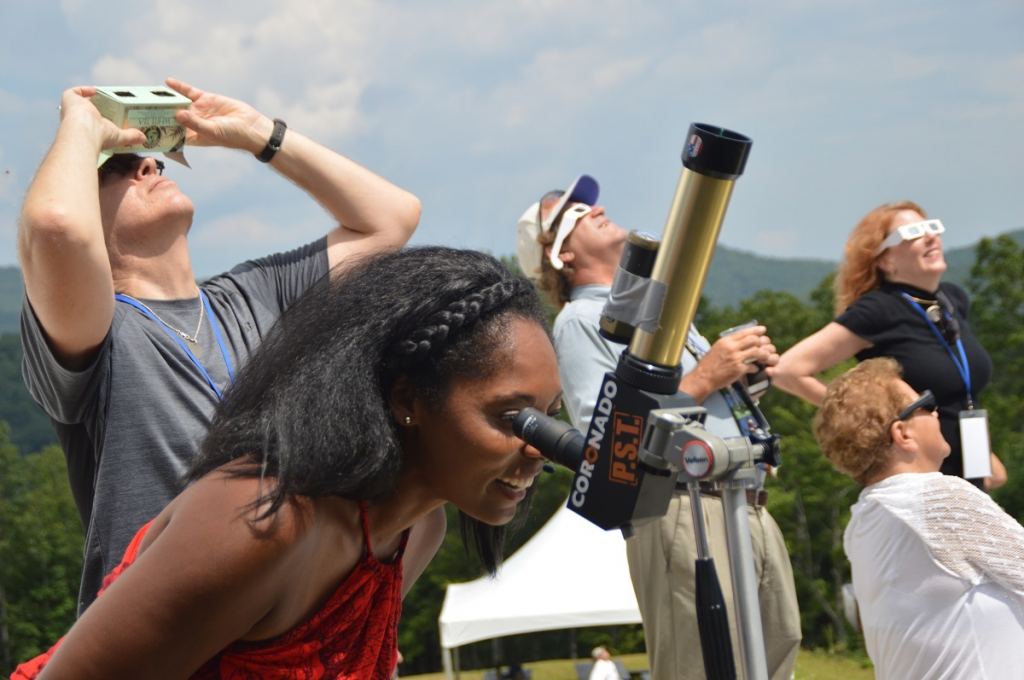
Observing and Eclipse Safety
Unlike totality, you have to protect your eyes while observing the Sun though all stages of an annular solar eclipse. Be sure to use eclipse glasses with the proper ISO 12312-2-2015 rating, and inspect them for pinholes beforehand. If you’re using a telescope, be sure to use a filter designed specifically for solar viewing that affixes snugly to the front aperture of the telescope, not those dangerous old eyepiece screw-on filters sold with department store telescopes in the 1970s. Building a Sun funnel or projecting the Sun onto a screen is the safest way to share the view, but again, be careful to either stop the aperture down or provide only brief views: telescopes such as Schmidt-Cassegrains with folded optical paths can overheat quickly, resulting in scorched optical coatings, unglued optical elements, and melted plastic parts.
Weather prospects for Sunday’s eclipse are best towards the drier sunrise portion of the track over the Horn of Africa and the Arabian peninsula; things get dicier along the Indian subcontinent and China in terms of cloud cover. Unfortunately, it looks like the Earthward face of Sol will appear devoid of photogenic sunspots come eclipse day. Viewers along a path across central Asia might also spy the International Space Station transiting the partially eclipsed Sun on a pass centered on 5:25 UT; consult Calsky for details. Finally, expect some amazing views from space, as well from satellites that observe the Sun. Typically, we get good views of solar eclipses from the European Space Agency’s Proba-2 and the joint JAXA/NASA Hinode mission.
Unfortunately, many an eclipse-chaser has curtailed their plans to view this one in person, due to the ongoing global pandemic. The good news is, astronomer Gianluca Masi and the Virtual Telescope Project have got you covered, with a live webcast of the ring of fire eclipse from across Asia and Africa starting at 5:30 UT/1:30 AM EDT.
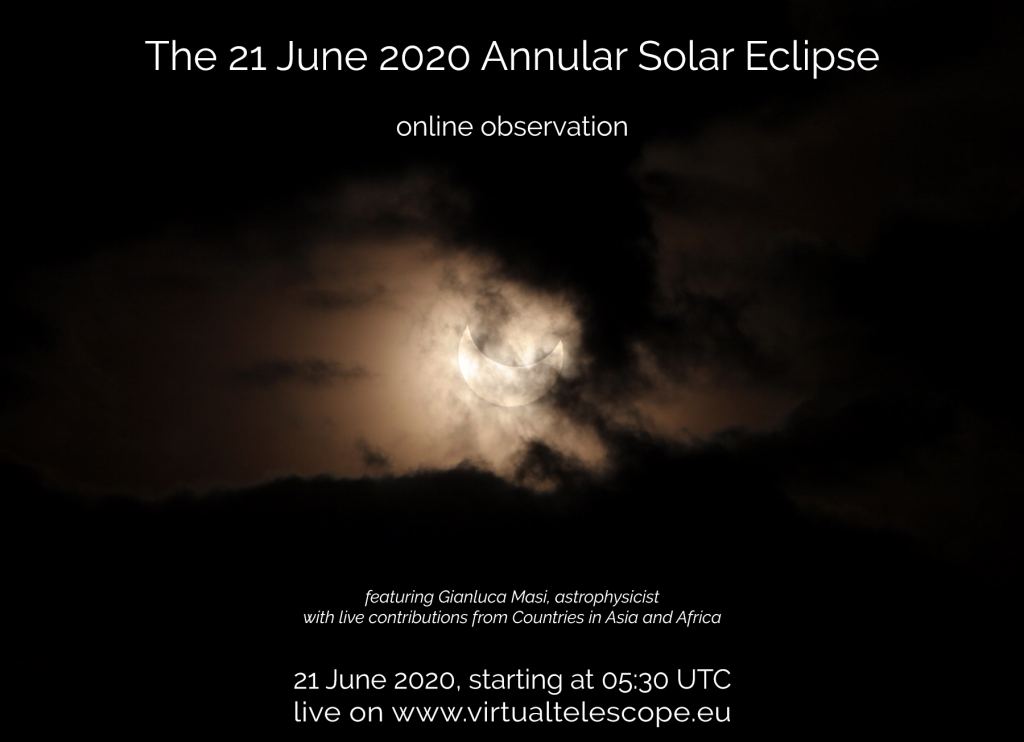
Another potential webcast will be hosted by Ajay Talwar from Sirsa, Haryana, India starting at around 5:00 UT onwards:
After this weekend, the next solar eclipse is the only total solar eclipse for 2020 on December 14th, crossing the southern tip of South America. We’ve got the low-down on eclipses and more through 2020 in our last book The Universe Today’s Ultimate Guide to Viewing the Cosmos. You can also prepare for eclipses towards mid-century with Michael Zeiler’s new book, the Atlas of Solar Eclipses 2020-2045.
Don’t miss a chance to see this weekend’s ring of fire annular eclipse, either live in person or online.
Lead image: An amazing ring of fire annular eclipse from 2013. Image credit and copyright: Shahrin Ahmad.

